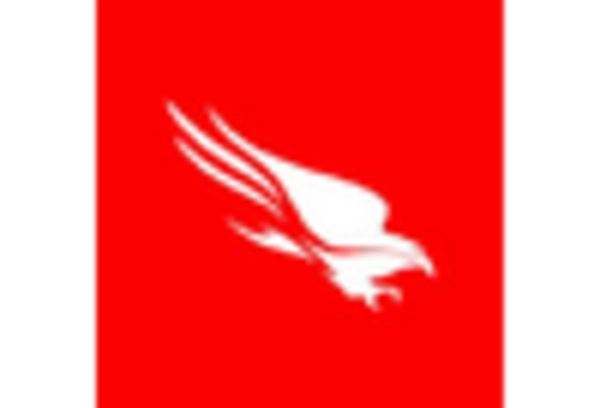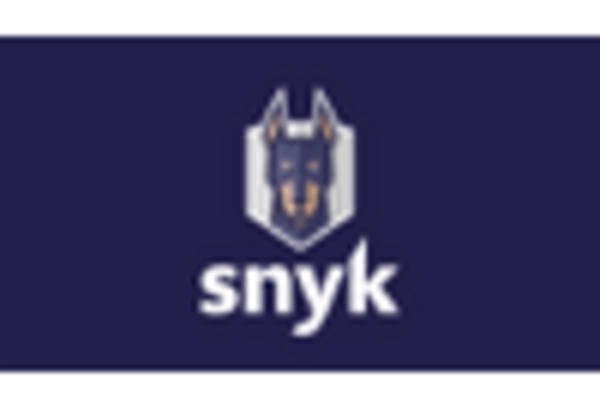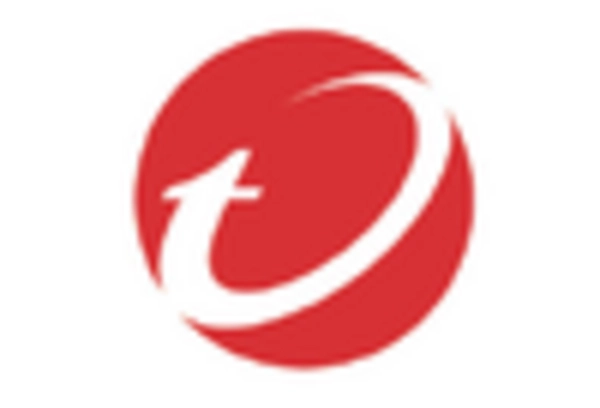Shift Towards DevSecOps Practices
The transition to DevSecOps practices is reshaping the Cloud-native Application Protection Platform (CNAPP) Market. By integrating security into the development and operations processes, organizations aim to enhance their security posture while maintaining agility. This shift encourages the adoption of CNAPP solutions that facilitate security automation and continuous monitoring throughout the software development lifecycle. As businesses recognize the importance of embedding security early in the development process, the demand for CNAPP platforms that support DevSecOps methodologies is likely to increase. This trend not only improves security outcomes but also fosters a culture of shared responsibility for security among development, operations, and security teams.
Regulatory Compliance Requirements
The stringent regulatory landscape is a significant driver for the Cloud-native Application Protection Platform (CNAPP) Market. Organizations are compelled to comply with various regulations, such as GDPR, HIPAA, and PCI DSS, which mandate robust data protection measures. Non-compliance can result in severe penalties and reputational damage, prompting businesses to adopt CNAPP solutions that ensure adherence to these standards. The market for compliance-related security solutions is expected to grow substantially, as organizations seek to automate compliance processes and maintain continuous monitoring. CNAPP platforms provide the necessary tools to manage compliance requirements effectively, thereby enhancing overall security posture and reducing the risk of regulatory breaches.
Increased Adoption of Cloud Services
The surge in cloud service adoption is a primary driver for the Cloud-native Application Protection Platform (CNAPP) Market. Organizations are increasingly migrating their applications to cloud environments, which necessitates robust security measures. According to recent data, the cloud services market is projected to grow at a compound annual growth rate of over 20 percent in the coming years. This growth indicates a rising demand for security solutions that can seamlessly integrate with cloud-native architectures. As businesses prioritize agility and scalability, the need for CNAPP solutions that provide comprehensive protection against threats becomes paramount. The ability to secure applications throughout their lifecycle, from development to deployment, is crucial in this evolving landscape.
Growing Cybersecurity Threat Landscape
The escalating frequency and sophistication of cyber threats significantly influence the Cloud-native Application Protection Platform (CNAPP) Market. Organizations face an array of challenges, including data breaches, ransomware attacks, and advanced persistent threats. Recent statistics suggest that cybercrime costs are expected to reach trillions of dollars annually, underscoring the urgency for effective security measures. As a result, businesses are increasingly investing in CNAPP solutions to safeguard their cloud-native applications. These platforms offer advanced threat detection, vulnerability management, and incident response capabilities, which are essential in mitigating risks. The dynamic nature of cyber threats necessitates continuous innovation in security technologies, further propelling the demand for CNAPP solutions.
Emergence of Advanced Security Technologies
The emergence of advanced security technologies is a pivotal driver for the Cloud-native Application Protection Platform (CNAPP) Market. Innovations such as artificial intelligence, machine learning, and behavioral analytics are transforming the way organizations approach application security. These technologies enable proactive threat detection and response, enhancing the effectiveness of CNAPP solutions. As organizations seek to leverage these advancements, the demand for platforms that incorporate cutting-edge security features is expected to rise. The integration of AI and machine learning into CNAPP solutions allows for real-time analysis of security events, thereby improving incident response times and reducing the overall risk exposure. This trend indicates a shift towards more intelligent and adaptive security measures in the cloud-native environment.

















Leave a Comment